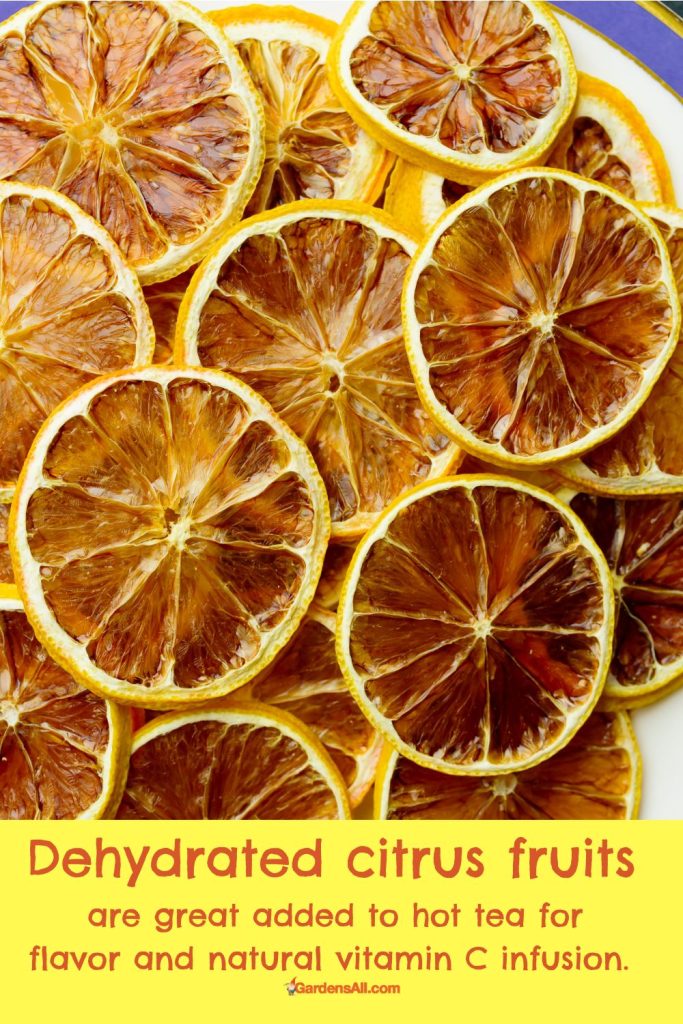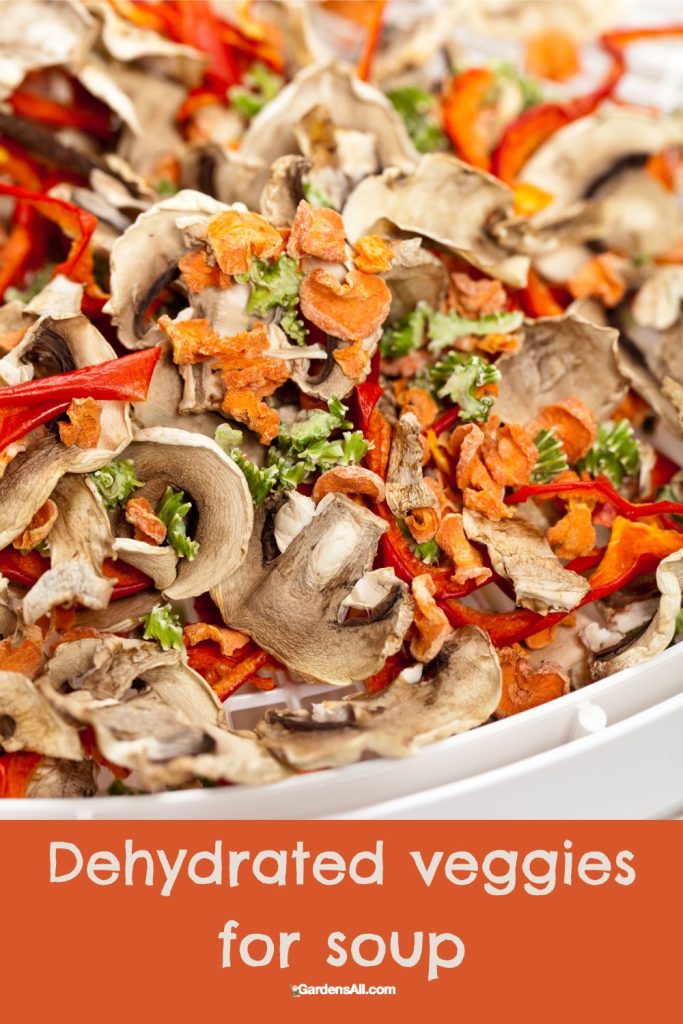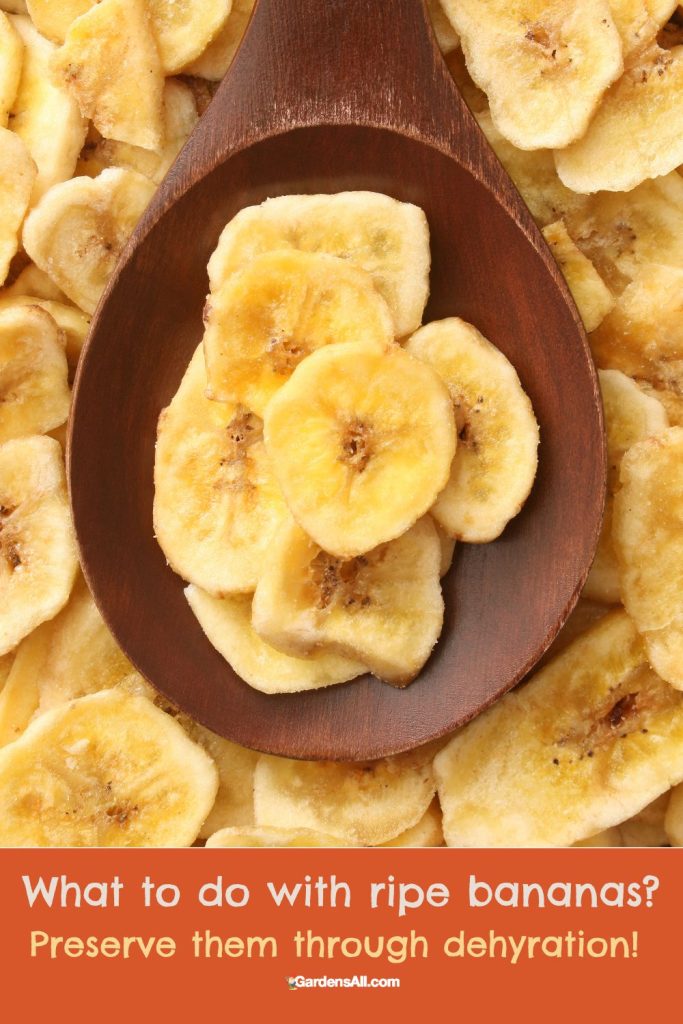Most gardeners can foods, but an often-overlooked sector of food preservation is dehydration. But what are the best foods to dehydrate and why? The answer often depends on the food and intended usage, so that’s what we’re covering in this article.
The dehydration method of food storage and preservation is relatively low-effort, requires few tools, and the food lasts for an impressive amount of time. The National Center for Home Food Preservation[1]https://nchfp.uga.edu/how/dry/pack_store.html says the optimal window is four to twelve months, though the food is likely safe for far longer than that.
But what foods work best? Let’s get into the best foods to dehydrate according to your tastes and needs.
Best Foods to Dehydrate
The best foods to dehydrate are ones that are naturally “wet,” like most fruits and some vegetables.
With that said, you can dehydrate almost anything with the right tools, skills, and a bit of practice. While fruits and vegetables are the most common options, herbs, lean meats, mushrooms, some dairy products, soups, sauces, jams, syrups, and even jellies can also be effectively dehydrated.
One of the reasons that juicy foods dehydrate well is that the process of sucking out the moisture through dehydration leaves all the flavor embedded within the fibers of the food. Consider grapes and how the sweetness is intensified when they’re dehydrated to become raisins.
So while it may seem that to dry the food out would diminish its flavor, dehydration actually intensifies it.
Reasons to Dehydrate Foods
The best reason to dehydrate food is to preserve it for months and even years. Food preservation is especially important for gardeners when the harvests are bountiful and more than can be eaten before the food spoils.
You can learn more about the three principles of food preservation here.
Which Foods Do Not Dehydrate Well?
Foods that have a lot of fat or oil do not dehydrate well because it is far more likely for them to go rancid and cause food-borne illnesses. Fatty meats, avocados, peanut butter, and most full fat dairy items are not recommended for dehydration because of this.
Check out also some of the other advantages and disadvantages of food preservation.
What Are The Best Foods to Dehydrate?
Fruits and Vegetables
These food are some of the best foods to dehydrate, listed alphabetically in their common respective categories of fruits and vegetables.
Best Fruits to Dehydrate
- apples
- apricots
- bananas
- blueberries
- cherries (pitted)
- citrus –
- grapefruit
- lemons
- limes
- oranges
- cranberries
- grapes
- kiwis
- mangos
- peaches
- pears
- plums
- raspberries
- strawberries
Dehydrated citrus fruits are great added to hot tea for flavor and natural vitamin C infusion, especially in winter.

Best Vegetables to Dehydrate
- carrots
- celery
- corn
- green beans
- green peas
- peppers
- potatoes
- sugar snap peas
- sweet potatoes
- tomatoes
- zucchini / summer squash
Lean Meats and Seafoods
Keep in mind that most meats and seafood don’t rehydrate well because the texture is odd, however these foods can still be dehydrated and eaten dry like jerky.
- Jerky (venison, turkey, beef, etc.)
- Ground beef (hamburger meat, also called “hamburger rocks)
- Chicken
- Fish (salmon, trout, tuna, cod, flounder, grouper, halibut, monkfish, pollock, croaker, haddock, perch, sea bass, sea trout)
- lean deli meats
- ground venison
- Turkey
- Pork
- Cooked shrimp
- Other pre-cooked, pre-sliced meats. A 1/16-inch slice is ideal, though other consistent slices will work.
You can find information on how to dehydrate meat here.
Fresh Herbs
We regularly dehydrate herbs from spring through much of fall.
The best herbs have a lot of strong, natural flavors. The more “sturdy” the herb, the easier it will dehydrate for you. Hardy herbs (like sage) can air-dry or dry in the sun with little to no issues, so long as you’re not in a humid climate.
However, if you’re in a humid region like we are in North Carolina, zone 7a, even the more stout herbs may mold before they dry.
In general, herbs with tender leaves (like basil) are more likely to mold, mildew, or decompose. These plants should not sun-dry and must be dried in a dehydrator or warming oven. Or, if you’re not in a humid climate you can air dry in a well-ventilated area where they will not be exposed to direct sunlight.
Here are some of the best herbs to dehydrate using a good food dehydrator:
Best Herbs to Dehydrate in a Dehydrator
- basil
- bay
- cilantro
- dill
- Italian parsley
- lavender
- lemon balm
- mints (all kinds)
- oregano
- Rosemary
- sage
- summer savoy
- thyme
Herbs That Don’t Dehydrate Well
You may not want to dehydrate the following herbs because they tend to lose most of their flavor in the drying process.
- chives
- parsley
- tarragon
However, some of these herbs can be grown indoors in winter for fresh snippets when you need them.
Mushrooms
Mushrooms are easy to dehydrate and store. They’re also easy to rehydrate and provide a flavorful and nutritious addition to just about any savory dish.
- chicken of the woods
- morels
- shaggy mane (ink cap)
- boletes
- chanterelles
- portobello
- oyster
- shiitake
- crimini
- enoki
- porcini
Jams, Jellies, Fruit Preserves, Gravy, Sauces, and Syrups
When syrups are dehydrated, most of them become crystallized sugar or powder. When gravy and sauces are dehydrated, they become a powder.
Many jellies, jams, and preserves look like fruit leather or like a dry “peanut brittle.” A few, like strawberry jelly, lightly resemble pepperoni slices, but they can all be good to dehydrate toward food preservation.
Other Good Foods to Dehydrate for Food Preservation
- elderberry syrup
- gravies –
- brown gravy
- white gravy
- chicken and turkey gravy
- country gravy
- honey
- jams, jellies, and fruit preserves
- maple syrup
- molasses
Prepared Meals to Dehydrate
You don’t have to dehydrate ingredients separately. It’s possible to dry the entire meal in just one or two components for ease of use later on if you have the right kind of dehydrator.
Many dry-prepared meals only require hot water to finish cooking before serving. We’ll cover these prepared meals in more depth in the “backpacking” section below.
Soup is easy to dehydrate. You can dehydrate from a pot of soup, or, you can dehydrate all the vegetable ingredients and package those up with powdered broth of your choice.

What are the Best Foods to Dehydrate for Snacks?
Whatever fruits and vegetables are your favorites should all make great foods to dehydrate for snacks.
Choose fruit for sweet snacks, trail mixes and fruit leathers.
Dried fruit can become nut mix with (or without) nuts and seeds such as pumpkin (pepitas) and sunflower seeds. Or, enjoy alone or with other favorite dried fruits for a high energy snack that travels well.
Fruit Leathers
Fruit leather can be made from one fruit or a combination of many. If you aren’t familiar, fruit leather is similar to the commercialized “fruit roll-up.”
It’s made from pureed fruits that are laid on a tray in a dehydrator. Fruit leather allows otherwise difficult fruits to be dehydrated.
Popular Fruit Combinations for Fruit Leather
- banana and strawberry
- blackberry and mint
- blueberry and banana
- habanero pepper and strawberry
- kiwi and pineapple
- lemon and strawberry
- oranges (or clementines) and cinnamon
- peaches and pears
- peach and raspberry
- raspberry and blueberry (called blue raspberry)
- strawberry and raspberry
- strawberry and rhubarb
You can also make fruit roll-ups, also called fruit leather. Just puree your favorite fruit and layer it in a cookie sheet to dry on your lowest oven setting, or in the rimmed fruit puree tray of your food dehydrator.
We have a good Nesco dehydrator, which we mention in our article on best food dehydrators, but it doesn’t have a solid sheet tray with rims, so we can’t make fruit leathers. So if you’re searching for one, make sure it has that function. We’ve got our eye on one of these food dehydrators.

Veggie Chips
Choose your favorite veggies for making veggie chips and crisps. You can dehydrate them plain or with seasonings, from simple salt and light olive oil to full on herb and spice blend themes, such as garlic kale chips, Mexican broccoli, Italian kale or cinnamon spiced sweet potatoes.
- Beets
- Broccoli
- Brussel sprouts
- Carrot
- Eggplant
- Garlic
- Garlic and spinach
- Kale
- Radishes with cinnamon sugar
- Seaweed
- Sweet potato (especially salt and vinegar style)
- Swiss chard
- Tomato
- Zucchini (try it with dill)
Best Foods to Dehydrate for Camping
Foods You Like
It’s easy to romanticize your camping trip and your stoke your ideal vision of a perfectly relaxing time out in nature. Reality though, is often another story.
When it comes to foods, make sure you’re actually packing foods you enjoy and not just foods that you wish you liked. This may seem obvious, but it’s a simple mistake I’ve seen repeated many times.
I have gone camping and hiking with people (different groups of people, not just the same people over and over) and had to share a lot of my food because they packed foods they had never tried before or thought that they would suddenly like once out in nature.
Since it happened to me several times with different people, I have to think that it must be a common occurrence and worth mentioning.
So maybe your vacation camping trip isn’t the time to change to eating lean and clean if that’s your goal. Save that for a health retreat or Monday resolutions, and take foods that are travel well and are easy to make so you can enjoy yourself.
You’re welcome, LOL!
Maybe even grab some garden herbs and the grill for something like these grilled herb pork chops.
Fruits and Vegetables
They can be dehydrated as is in bite sized pieces. For fruit, you can always add sweet spices, or puree and make it into fruit leather.
For vegetables, you can lightly oil and season with herbs or spices and leave in bite sizes or make into chips. See the lists above.
Jerky, Meats, Seafood
Look in the above sections for more information on these. This category is an excellent source of protein, so unless you’re vegan or vegetarian, it should not be missed.
Popular Camping Foods to Dehydrate
A note on dairy products: Dehydrating dairy can be tricky, so be sure to follow the manufacturer’s instructions or else purchase commercially dehydrated dairy products.
- broth or bouillon, powdered, for instant soup or warming beverage
- cheese powder[2]https://extension.missouri.edu/publications/gh1563
- milk powder[3]https://extension.missouri.edu/publications/gh1563
- mushrooms
- noodles – ramen packages are cheap and easy dehydrated foods to pack for camping, so for this you might buy rather than make your own
- eggs, powdered & dehydrated – best to purchase
- grains – while these can be dense, they cook up into more than twice their size and weight
- bulgur
- buckwheat
- grits, instant
- quinoa
- rice, instant
- gravy, powdered dehydrated
- hummus
- potatoes / mashed potatoes
- quinoa
- raisins
- rice, instant
- shrimp
- dried soup mix
Best Foods to Dehydrate for Backpacking
Camping and backpacking snacks can be different. Backpacking requires lightweight nutrient-dense foods because you will be carrying all of your camping gear on your back (instead of in a vehicle or on a horse, mule, or another pack animal).
Since most backpackers burn a lot of calories with a limited cache of food, high-calorie content and heavy nutrient density should be the number one priority. Dried foods are condensed, which makes it incredibly easy to overeat. Normally not a good thing for sedentary life, this is a serious benefit when you’re out in the backcountry and constantly on the go.
Hydration caution: while this is an article about best dehydrated foods, just be aware that if you’re backpacking and consuming mostly dehydrated foods, you may need to hydrate yourselff, more than usual. Not only are you being active and thus need to replenish water, you’re also eating dried food which take more of your body fluid to process.
An estimated 25% of your water intake typically comes from food, so dried-food users must be mindful of their water consumption and drink more as needed.
Make Your Meals in Advance
For backpacking trips, consider making your meals in advance and then dehydrating those meals, so they are easy to assemble on the trail.[4]https://www.trail.recipes/dehydrating123/dehydrating123-how-to-dehydrate-whole-meals-and-leftovers/
You already have to find and make camp; you might as well make dinner as effortless as possible. Most of these just require boiling water to cook or rehydrate.
Mixes and Meals to Dehydrate
- apple crisp (pie), can also make with nectarines or blueberries instead
- chicken Marbella
- chilis and soups (chicken taco soup is so good)
- fried rice
- jambalaya
- lentil marinara
- minestrone soup
- oatmeal
- pasta primavera
- ramen
- trail mix
- veggie risotto
Low Weight, High Calorie & Nutrient Foods
Other good dehydrated foods that are low in weight but high in calories and nutrients are:
- Beans, refried
- Deli meats
- hummus
- jerky
- quinoa
Okay! You’ve got your checklists of ideas here. Add your own and you’re ready to prep, pack and go! Let us know your favorites, especially if they’re not on these list.
You may also be interested in the 3 Principles of Food Preservation and some advantages and disadvantages of food preservation.
We are an online gardening publication sharing all things garden related! Including urban farming, family gardening, homesteading, gardening for profits, and more. We’re all about growth!
References

